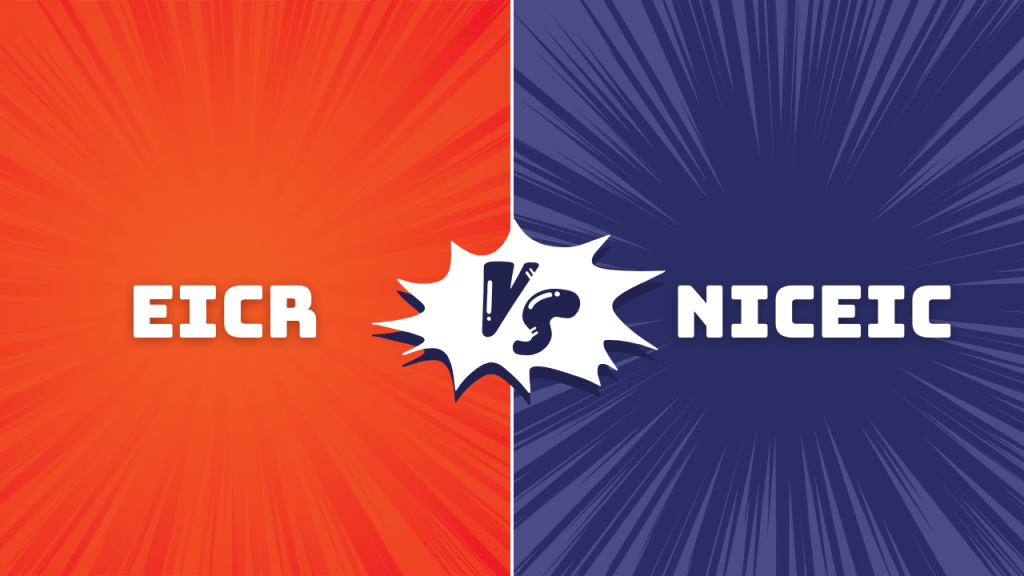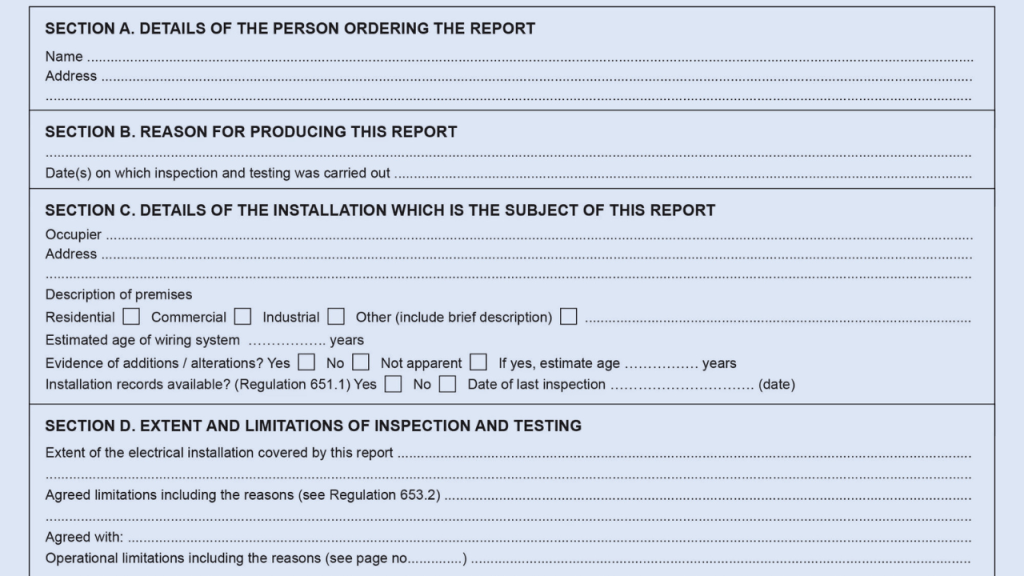Understanding the distinction between EICR (Electrical Installation Condition Report) and NICEIC (National Inspection Council for Electrical Installation Contracting) is crucial for both property owners and professionals in the construction and electrical sectors. While an EICR provides a thorough assessment of the electrical installations to gauge safety and compliance, NICEIC acts as a regulatory body that ensures electrical contractors are qualified and adhere to safety standards.
This differentiation not only impacts regulatory compliance but also influences the safety protocols of a building, raising the question: how does one effectively navigate and implement these standards to ensure optimal electrical safety. Let’s Explore What Is the Difference Between EICR and Niceic?
What is the difference between eicr and niceic
Understanding the distinction between EICR and NICEIC involves recognizing that they represent fundamentally different aspects of electrical safety and regulation.

The Electrical Installation Condition Report (EICR) is a formal document produced following an assessment of the electrical systems within a building. This evaluation is designed to ascertain the longevity and safety of existing electrical installations, identifying any deviations from the current standards set out in the BS 7671, the UK national standard for electrical installations.
On the other hand, the National Inspection Council for Electrical Installation Contracting (NICEIC) functions primarily as an oversight body. It provides certification and governance for electrical contractors, ensuring adherence to safety and performance standards.
The NICEIC assesses and accredits contractors, offering reassurances about the compliance and competency of electrical professionals. Unlike the EICR, which is a report on a specific installation at a specific time, NICEIC certification is an ongoing credential awarded to electrical contractors who meet their rigorous requirements.
Therefore, while EICR is an assessment tool focusing on the condition of an electrical installation, the NICEIC is a regulatory body certifying the competency and reliability of contractors handling such installations.
NICEIC certificate
An NICEIC certificate serves as a critical validation for electrical contractors, ensuring that they meet the stringent standards required for safe and effective electrical installations. This certification is integral to maintaining high levels of safety and compliance within the electrical contracting industry. The certificate is awarded by the National Inspection Council for Electrical Installation Contracting, an organization committed to the assessment and certification of electrical work in the UK.
Below is a detailed table illustrating key aspects associated with the NICEIC certification:
| Aspect | Description | Relevance |
|---|---|---|
| Standards Compliance | Ensures adherence to the latest BS 7671 Wiring Regulations. | Safety & Legality |
| Regular Assessments | Annual assessments to maintain certification status. | Continuous Compliance |
| Technical Competence | Demonstrates a contractor’s ability to perform up-to-standard work. | Quality Assurance |
| Consumer Protection | Provides a Platinum Promise to safeguard consumer rights. | Trust & Reliability |
| Scope of Work | Covers full range of electrical installations and maintenance. | Comprehensive Service |
The possession of an NICEIC certificate is not just a badge of proficiency; it is a fundamental requirement for electricians committed to excellence in their field, aligning with both regulatory demands and industry best practices.
EICR certificate
Typically, an Electrical Installation Condition Report (EICR) certificate is issued following a comprehensive assessment of an electrical system within a residential, commercial, or industrial property. This document serves as a formal declaration of the electrical safety of the installation at the time of inspection. It is critical in identifying any deficiencies against the national safety standard for electrical installations.

The EICR covers various elements of an electrical installation, including wiring, switchgear, and associated accessories. It evaluates these components for wear and tear, damage, or any modifications that diverge from the original installation or current regulations.
The assessment process, conducted by a qualified electrician or approved contractor, involves a sequence of visual inspections and electrical tests. These tests include insulation resistance, polarity, earth fault loop impedance, and circuit continuity, which are crucial for verifying the integrity and functionality of the electrical system.
Upon completion of these evaluations, the EICR will detail any observed damages, deterioration, defects, or non-compliances with current safety standards, and categorize them based on the level of danger they pose.
An EICR certificate is pivotal for ensuring ongoing electrical safety and compliance, serving as an indispensable tool for managing the electrical risks in a property.
Do I need an EICR if I have an Installation Certificate
While an Electrical Installation Condition Report (EICR) and an Installation Certificate both pertain to the safety and compliance of electrical systems, their purposes and the contexts in which they are required differ significantly.
An Installation Certificate is issued following the installation of a new electrical system or a significant alteration or addition to an existing system. It certifies that the installation has been executed according to the standards of the BS 7671 at the time of installation and is safe to use.
On the other hand, an EICR is a formal document produced after assessing the condition of existing electrical installations to identify any deficiencies against the current standards of the BS 7671. This assessment includes checking for deterioration, defects, and any aspects of the electrical installation that might give rise to danger.
Hence, even if you possess a current Installation Certificate, it does not negate the necessity for an EICR. The Installation Certificate covers only the condition of the electrical system at the time of its installation or modification.
Over time, wiring can deteriorate or become outdated as safety standards evolve. Therefore, periodic EICRs are crucial to ensure ongoing safety and compliance with the latest regulations, irrespective of the existence of an Installation Certificate.
Do I need an EICR if I have an EIC
Understanding the distinction between an Electrical Installation Certificate (EIC) and an Electrical Installation Condition Report (EICR) is crucial for maintaining electrical safety compliance.
The EIC serves as a confirmation that a new electrical installation or a significant alteration to an existing system adheres to the stipulated standards at the time of installation. It essentially declares that the work was executed correctly and safely according to the regulations in place.
On the other hand, an EICR is a formal document compiled following a detailed assessment of the electrical installation within a property. It aims to identify any deterioration, defects, or aspects of the installation that do not comply with the current safety standards.
The primary purpose of an EICR is to ensure ongoing safety and to pinpoint any areas that may require attention to prevent potential hazards.
Therefore, possessing an EIC does not negate the need for an EICR. While an EIC confirms safety at the time of installation, an EICR assesses the continuing safety of the electrical system.
Regular EICRs are recommended to address the natural wear and tear and any subsequent compliance issues that might arise after the initial certification.
EIC certificate cost
Given the importance of electrical safety, the cost of obtaining an Electrical Installation Certificate (EIC) can vary significantly depending on several factors.
Key determinants include the complexity of the electrical installation, the geographic location of the property, and the accreditation level of the inspecting electrician. Typically, the size and scope of the installation play a pivotal role; a larger or more complex system requires more extensive examination, thereby incurring higher costs.

The expertise and credentials of the electrician also influence the price. Electricians certified by reputable bodies such as the NICEIC often command higher fees due to their demonstrated adherence to stringent safety standards and ongoing professional development.
The regional variations in labor costs further complicate the pricing structure, making the geographical location a non-trivial factor in the overall cost assessment.
Additionally, the urgency of the inspection can affect cost. Expedited examinations may attract a premium.
Therefore, property owners should request detailed quotes from multiple providers to ensure competitive pricing. This analytical approach to cost evaluation ensures transparency and cost-effectiveness, safeguarding the property owner’s investment in compliance and safety.
Frequently Asked Questions
Can a Homeowner Perform Their EICR Legally?
Legally, a homeowner can perform their own Electrical Installation Condition Report (EICR) if they possess the necessary qualifications and competencies. However, for safety and compliance, it is highly recommended to hire a registered professional.
How Often Should Commercial Properties Undergo an Eicr?
Commercial properties should undergo an Electrical Installation Condition Report (EICR) every five years. This frequency ensures compliance with safety regulations and helps identify potential electrical hazards before they become critical issues, safeguarding both property and personnel.
Are There Penalties for Not Having an Eicr?
Failing to obtain an Electrical Installation Condition Report (EICR) can lead to significant legal penalties, including fines. It is crucial for property owners to comply with safety regulations to avoid such consequences.
What Qualifications Must an Electrician Have to Issue an NICEIC Certificate?
To issue an NICEIC certificate, an electrician must be a registered member of the NICEIC, demonstrating adherence to the latest wiring regulations and a proven competence in electrical installation safety and standards.
Does an EICR Include Testing All Appliances?
An EICR (Electrical Installation Condition Report) primarily assesses the safety of electrical installations, not individual appliances. It involves testing fixed wiring, not portable or movable appliances such as kettles or microwaves.
Conclusion
In conclusion, the distinction between EICR and NICEIC fundamentally lies in their respective roles within electrical safety and compliance. EICR is an evaluative report detailing the condition of electrical installations, whereas NICEIC certifies the qualifications and adherence to safety standards of electrical contractors. Understanding these differences is crucial for ensuring both the safety of electrical installations and the credibility of the professionals overseeing these installations. Compliance with both entities enhances safety and regulatory adherence in electrical contracting.









